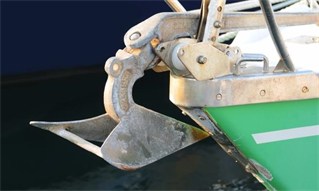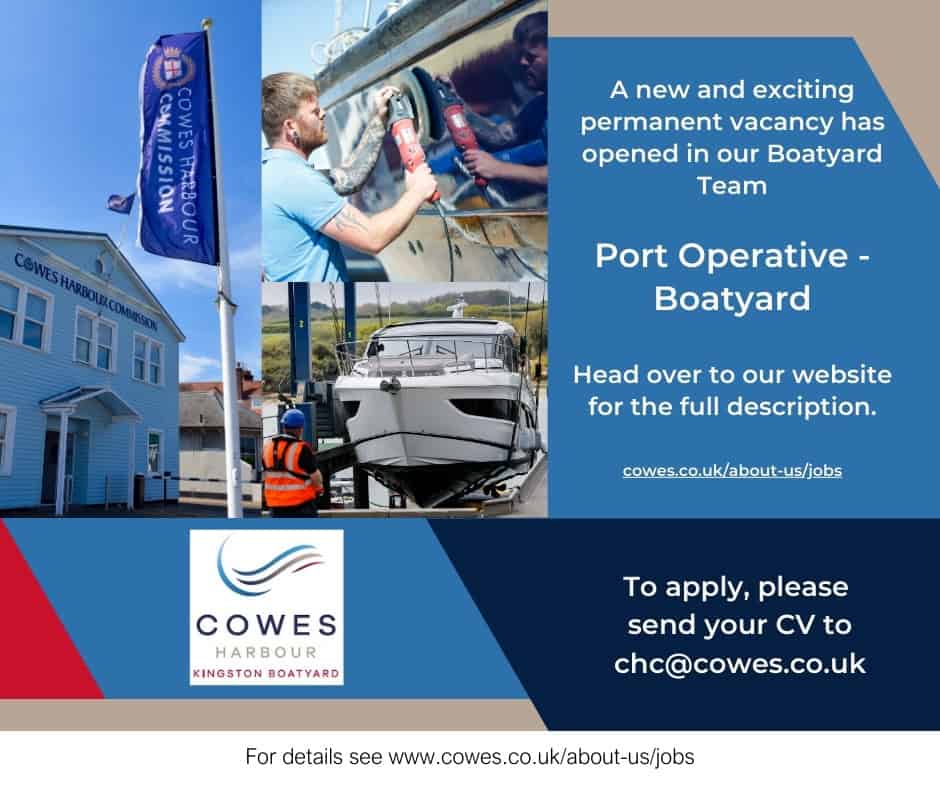
Pre-Season Checks
It is essential to check your boat and systems regularly, and spring is the perfect time for the job. Of course, if you’re venturing out after being laid up in the boatyard or afloat, a thorough check is vital, but even if you’ve been boating all winter, a regular inspection can flag issues before they cause a crisis.
Over the last five years, 24.4% of the callouts for Cowes RNLI have been for machinery and equipment failure – the most significant reason. Many of these issues are preventable – we all need to be prepared, even for a short jaunt in the Solent.
A pre-season inspection is a good place to start. The scope will depend on the type of boat, the complexity of your systems and manufacturers’ recommendations, but these are our suggestions:
Take a good look
Crawl over the boat from stem to stern, inside and out. Remove all the clutter to get to the bilge, the backs of cupboards and under the bunks.
If accessible, look at the hull-to-deck join, the mast step, underneath winches and windlasses. Scrabble in the deck locker and shine a torch into the corners of your console.
If your boat is out of the water, inspect the keel fixings, rudder bearings, trim tabs and propulsion.
Look for water or fluids, rust, mould, debris, and cracks. A rogue jubilee clip, flakes of paint, broken split pin or drop of pink fluid has come from somewhere. Ask yourself whether this is normal or a sign of a leak, structural damage, or failure. Call an expert like a surveyor, engineer, rigger, or boatbuilder if you’re unsure – a second opinion saves sleepless nights.
Engine
Inboard, outboard, sterndrive, shaft, water-cooled, air-cooled, petrol, diesel, electric or fuel cell – engine checks are specific. It is good practice to service the engine according to the manufacturer’s instructions every year. Even if you pay an engineer for the annual service, it is worth taking a look yourself.
The first thing to do is to take a general look to check for anything out of place – this could be an oily rag in the bilge, a loose nut or a sheen on the water. Look at:
- Wiring – connections firm and wires undamaged
- Fluid levels – engine and gearbox oil, hydraulics for steering or trim tabs, coolant, washer fluid etc
- Belt – tension and wear
- Filters – accessible weed traps and Racor-style fuel filters (replace consumable filters)
- Engine mounts
- Batteries – holding charge, secured safely
- Seacocks – operating smoothly, corrosion
Sails and rigging
If the sails have been onboard all winter, pull them down to deck level for a good look over. Unfortunately, frayed stitching and worn cloth mean you need to call a sailmaker for some TLC – it’s surprising how quickly an old sail can fall apart.
Again, a careful visual inspection is the best place to start. Look at:
- Mast, boom and poles – straight and undamaged
- Standing rigging – kinks in the wire, sharp strands, rust on terminals, split pins in place
- Halyards and sheets – chafe and damage
- Sails – fabric and stitching
- Furling gear – top swivel, drum and line
- Reefing system – chafe on lines, turning blocks
- Winches – clean and service
Safety equipment
Safety kit is anything that helps to keep you and your boat safe, so alongside the usual horseshoe buoys and flares, include anchoring systems, navigation and means of attracting attention. Look at:
- VHF radio – make a radio check call to National Coastwatch – “Calshot NCI” on VHF Ch 65. Don’t call Solent Coastguard for radio checks
- Lifejackets and inflatable danbuoys – service annually
- Flares/pyrotechnics – date and condition
- Fire extinguishers – service or replace
- Lifelines and jack stays – fraying and wear
- Gas detector – test. Fit a carbon monoxide detector
- Bilge pumps – manual or electric
- Anchor chain/warp – wear, connections to the anchor and boat
- Windlass – clean and service
- Navigation – electronics and paper charts up-to-date
As well as physically checking safety equipment, it is a good idea to refresh your crew on emergency procedures like man overboard or making a Mayday or PanPan call.
Having fun
Boating should be all about fun, and the one sure way of keeping everything enjoyable is to stop things from going wrong. So, look at the pre-season checks as an opportunity to learn more about your boat and to share your knowledge with your crew.
If you’re feeling a little rusty or have a novice crew, why not take a course or hire an instructor for the day? We’ve all got something to learn – every day is a school day!



